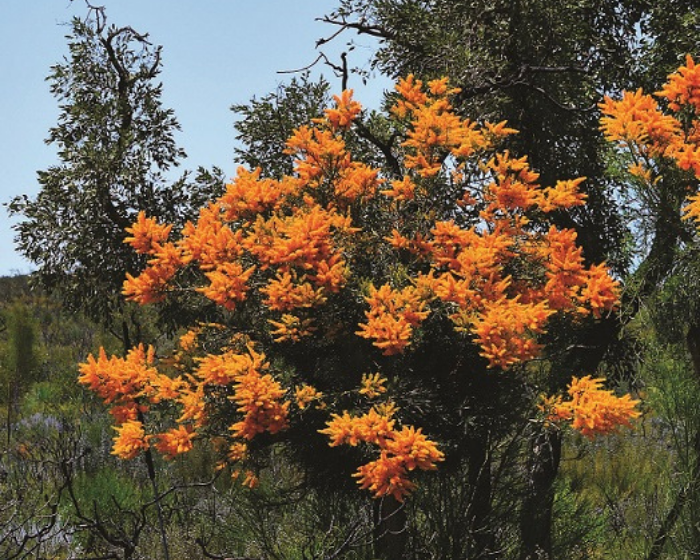What is the colour of your Christmases past?
As a child, the Christmas colours I recall are mainly green, red and white. There were cards with snowy scenes, holly and evergreen trees and table decorations in these colours. Most people decorated pine trees. Santas were red and white (influenced by Coca-Cola).
I was still a child when I knew a person who bucked the trend. He had an orange flowering Western Australian Christmas tree, or Moodjar.
Not everyone approved. It seemed that most people thought we ought to use northern hemisphere – English and North American – colours.
The colours of our Christmases may not suit us as we conform to family expectations or traditions which we might otherwise not follow.
What colour do you associate with Christmas present?
For many, Christmas this year is bright.
In some places, especially where it is celebrated in the shadow of COVID -19, Christmas is muted or dark.
This may affect us if presents do not arrive because of world supply chains and the sheer volume of post and parcels. This may affect us if those dear to us have had a hard time or continue to live with deprivation, uncertainty or consequences of the times that are hard to manage.
I know some for whom a dominant Christmas colour is blue.
‘Blue’ symbolises Christmas being sad or hard, including for those feeling losses keenly or a particular reminder of some distressing experience, such as a gap in our gatherings for Christmas.
Not everyone finds this a ‘wonderful time of the year’. Over time, a deep blue Christmas may become lighter, yet never stop having a bluish tinge. One Christmas letter I received last year said the person had known over 20 people who had died in 2020.
The message of Christmas is for those for whom Christmas is blue.
What colour do you associate with Christmases yet to come?
The good news of God’s work is that the season when we celebrate the coming of the light has the power to encompass all the colours of the spectrum.
At times the colours shift and different ones dominate – that is inevitable. A time that is bright for us may not be bright for everyone around us. John’s gospel reminds us that the light of Christ shines in the darkness and the darkness will never overcome it.
So, we hold to the Christmas hope, peace and joy whenever we can and remember that the core of the season is a message of God’s love for all. This is a gift we can always offer each other.
“Joy to the world… Let every heart prepare him room…”
The love of God which is embodied in Christ and the Christmas stories has a particular focus in the gospel for this year.
For Luke, God was revealed not to the powerful, the confident or comfortable, or people central to social life or the power structures, but to those whom others saw as inferior or not to be included in the circle.
‘Shepherd’ in some minds in the first century meant ‘unclean,’ dirty, smelly, crooks and cheats, even when the poverty they lived with was beyond their control. In Luke’s story, these are the ones who have a central place.
There are many ways of experiencing being outside the circle. It may be that our colour doesn’t fit with some others’ expectations, it may be that we feel unable to share what is really going on with us.
There are many versions of Christmas, many experiences of Christmas. Different versions speak to different people.
Some enjoy the frills, and some prefer plain. Some may attract us, and some repel. As there are many different colours of Christmas, there are many dimensions to be explored.
What about you?
We are invited to come with hearts prepared to make room – for the joy – and for whatever is real for us, whatever colour or combination of colours are ours this year. Making room means allowing for God to reveal new dimensions of Christmas to us.
Rev Ian Tozer
